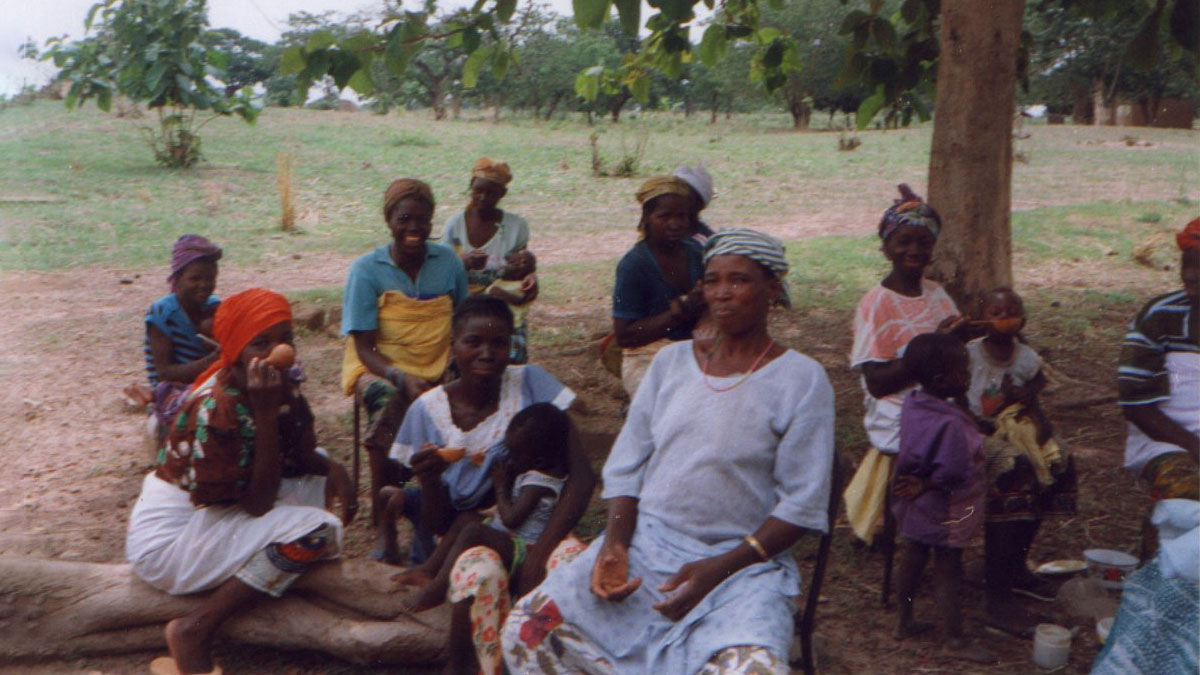
Ceremonies
Weddings and Children
Betrothal
A girl can be betrothed while still a baby. In fact, men of the village will vie to be the one who ties a cowry shell to a girl baby's wrist when she is born to indicate a teasing kind of betrothal. This betrothal may become a serious one, or another spouse may be considered for the girl. Parents have to approve of their children's choice of spouse. If a daughter does not go with the man her family has suggested, she cannot expect much help from her family.
Once the girl reaches the age of six or seven, the male to whom she is betrothed will begin to bring presents to her family. These can be something solid, like wood for the fire or clothes for this bride-to-be, or they can be a service provided. Working on the family's farm one or two days a season may be a requirement. Presents are seen as an investment on a future dividend (the bride). The presenting of gifts does not guarantee that the man will get the bride, though. She is not considered his wife until she has settled with him. Even during the week-long wedding ceremony, another man can steal the bride away.
Betrothed people do not seek each other out in public. Most contact is through friends, who act as intermediaries. A young woman may visit her future husband in his home at night, but the two are expected to abstain from sex until marriage. They are to wait until after a ritual during the wedding, which includes the sacrificing of a chicken to the spirits. It is bad if the girl becomes pregnant before the wedding; the family must now sacrifice not only a chicken, but also a more-expensive sheep. In addition to this, the girl's parents will feel a loss of honor. They will not be able to eat any of the fine food prepared for the bride and her family during the time of the wedding. Nothing bad, though, is thought of the child born to the woman who was pregnant early.
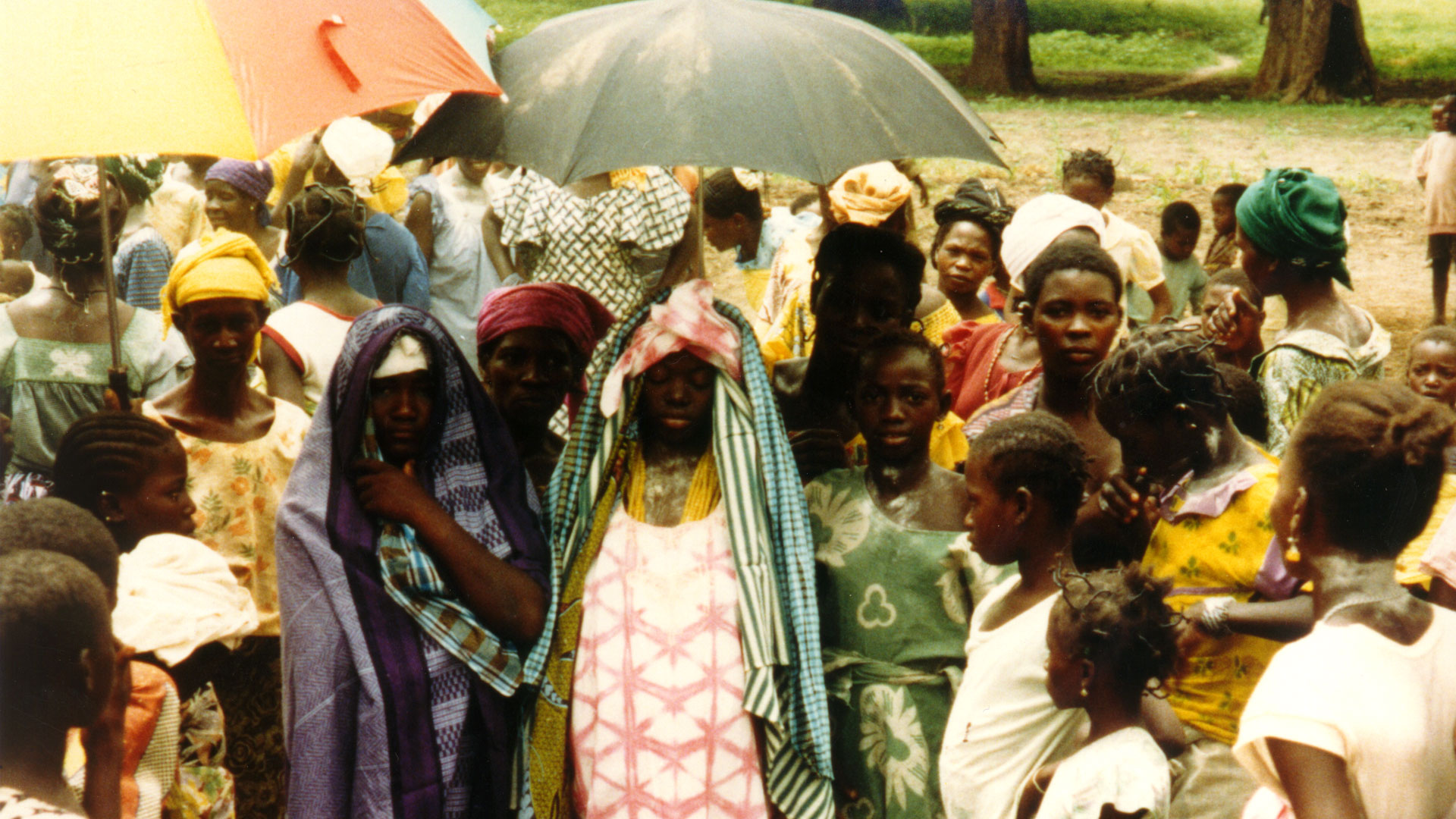
Marriage
Marriage occurs at approximately seventeen years of age, though young women who mature quickly may marry younger. Tagba men usually have more than one wife, with three being the average. Only women are involved in the wedding ceremony itself. The day before the wedding begins, the girls to be married (there are multiple marriages of women within the same age set at the same time) spend the night together with the old women of their lineage in one hut in the village. On the day the ceremony begins, the women of the village go to the sacred grove across the river. There, a sacred ritual takes place, and then the women are washed by their future co-spouses (either other wives of their husbands or their sisters-in-law). When the women come back to the village, the brides are carried over the river facing the sky. Once the group reaches the village, the brides' heads are covered and remain that way any time during the celebration that they are out in public.
The return to the village sets off a week of celebration for the women, including dancing, singing, and joking (often the jokes insult men). The brides eat a lot of great food during this week. The men are not involved in the celebration.
-
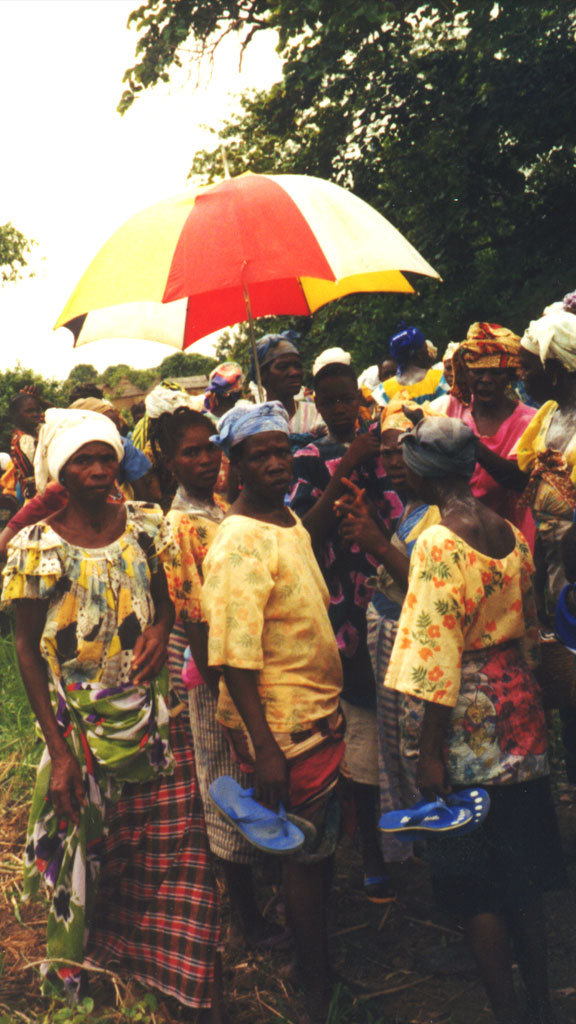 Women gather together.
Women gather together. -
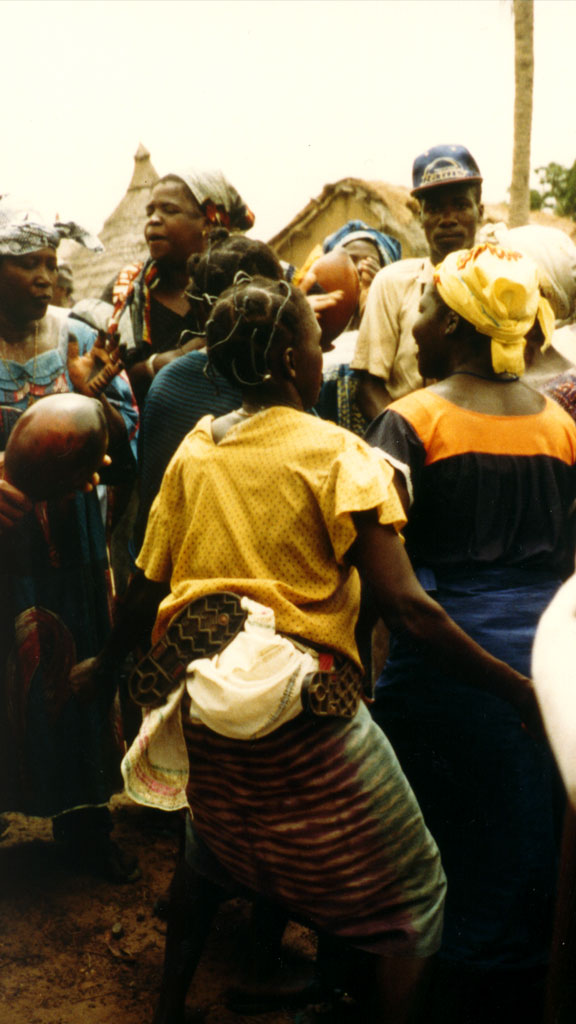 A male musician plays for the dancing women.
A male musician plays for the dancing women. -
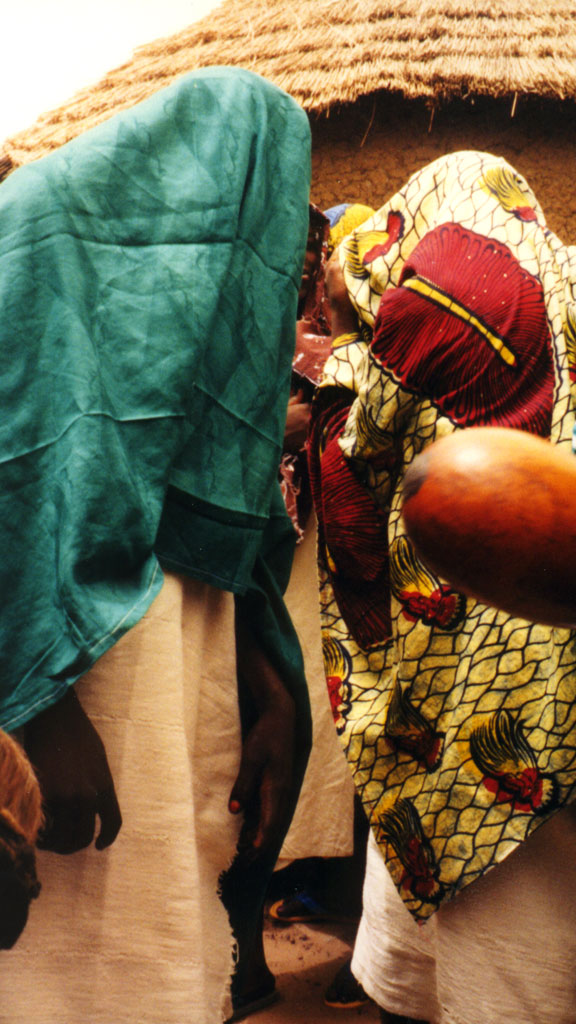 The brides are covered in public.
The brides are covered in public.
After the Celebration
Once the week of celebration is over, the bride moves back into her mother's home. By tradition, the new bride acts reluctant to move into her husband's home, and an evening ritual begins between the bride and the groom's family. Every evening two or three people from the husband's family will visit the home of one of her neighbors in the compound. The bride will be informed the visitors are there. She will pretend not to hear and spend some time making sure her mother's house is in order. Once all the chores are done, she will take a shower, dress up, then take her flashlight and find her way to the neighbor's house. Having already fed the visitors, the neighbor then leaves the house so the bride and visitors can be alone. The purpose of the visit is to try to get the bride to come back to her husband's house. The bride will act reluctant but be convinced to spend the night with her husband, only to return to her mother's house before daylight the next morning.
This visiting routine continues until the woman's first baby is born. At this point the mother-in-law asks the mother's permission for the bride to move in to her own house in her husband's compound. One of a woman's most important roles in marriage is bearing children. Babies are considered gifts of the gods and the ancestors, so they are always welcome. Everyone in the extended family helps to raise the children, so no mother is over-burdened. If a couple remains married for a while but still has no child, the bride will be invited to come live in the compound but she will live in her mother-in-law's house.
The sign of a wife's true acceptance into a family is when she gets her own kitchen (cooking house). There is a ceremony that takes place before the kitchen is built. It is a wonderful surprise for the happy wife.
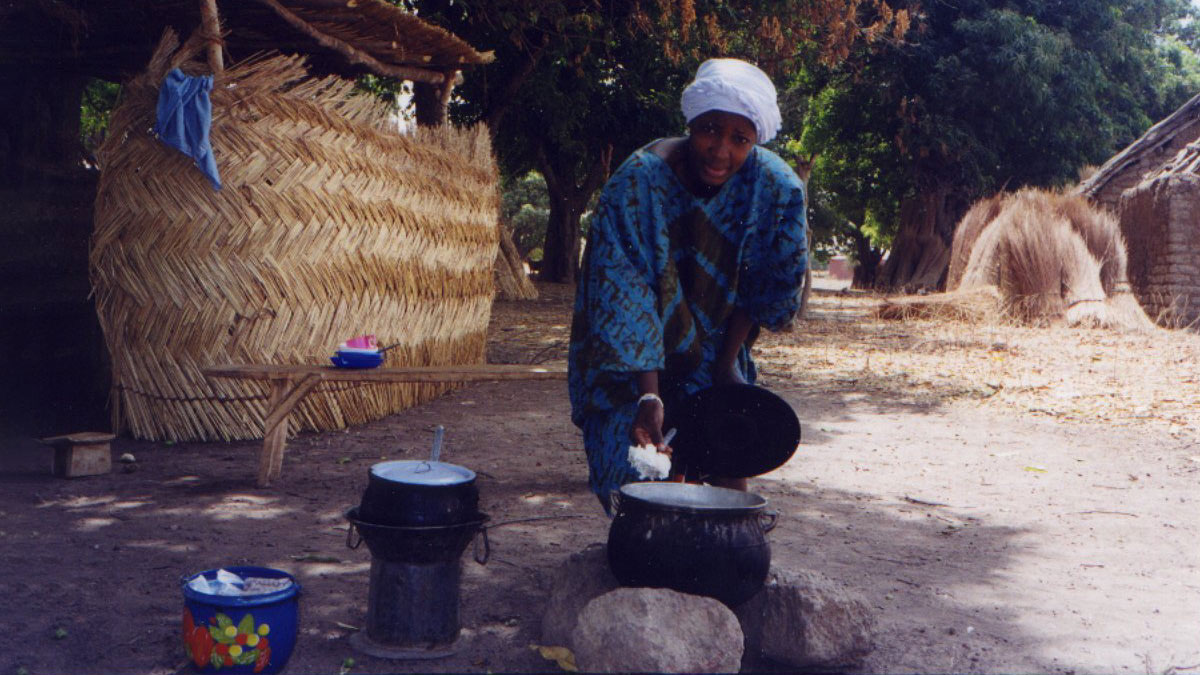
Separation
Divorce is allowed between Senufo couples. Anything that a woman has in her home belongs to her husband if she leaves him. Knowing this, a woman will often leave her most valuable possessions in the house of her mother when she moves into her husband's compound. This ensures that these objects will remain in the wife's possession even if she leaves her husband.
If a woman's husband dies, she is then married to the husband's next younger brother. The new couple hopes that their first child together will be a girl. A girl baby is a sign that the former husband is pleased with the match.
Children
Traditional Senufo names tell either the child's order of birth or which spirit or ancestor is important to its conception and protection. A relationship is established between this owner spirit and the person. This relationship infers rules of behavior on the person involving colors, foods, rituals to be performed, favorable days of the week, etc.
Birth Order Names
Birth order names (listed below) are used during rituals. Other names may be given to the children for use in everyday conversation. The spelling/pronunciation of these names may vary slightly from area to area.
| Birth Order | Sons | Daughters |
|---|---|---|
| 1st | Zié | Yélé |
| 2nd | Zanga | Yô |
| 3rd | Ngolo | Yiré |
| 4th | Bê | Béré |
| 5th | Dô | Niama |
